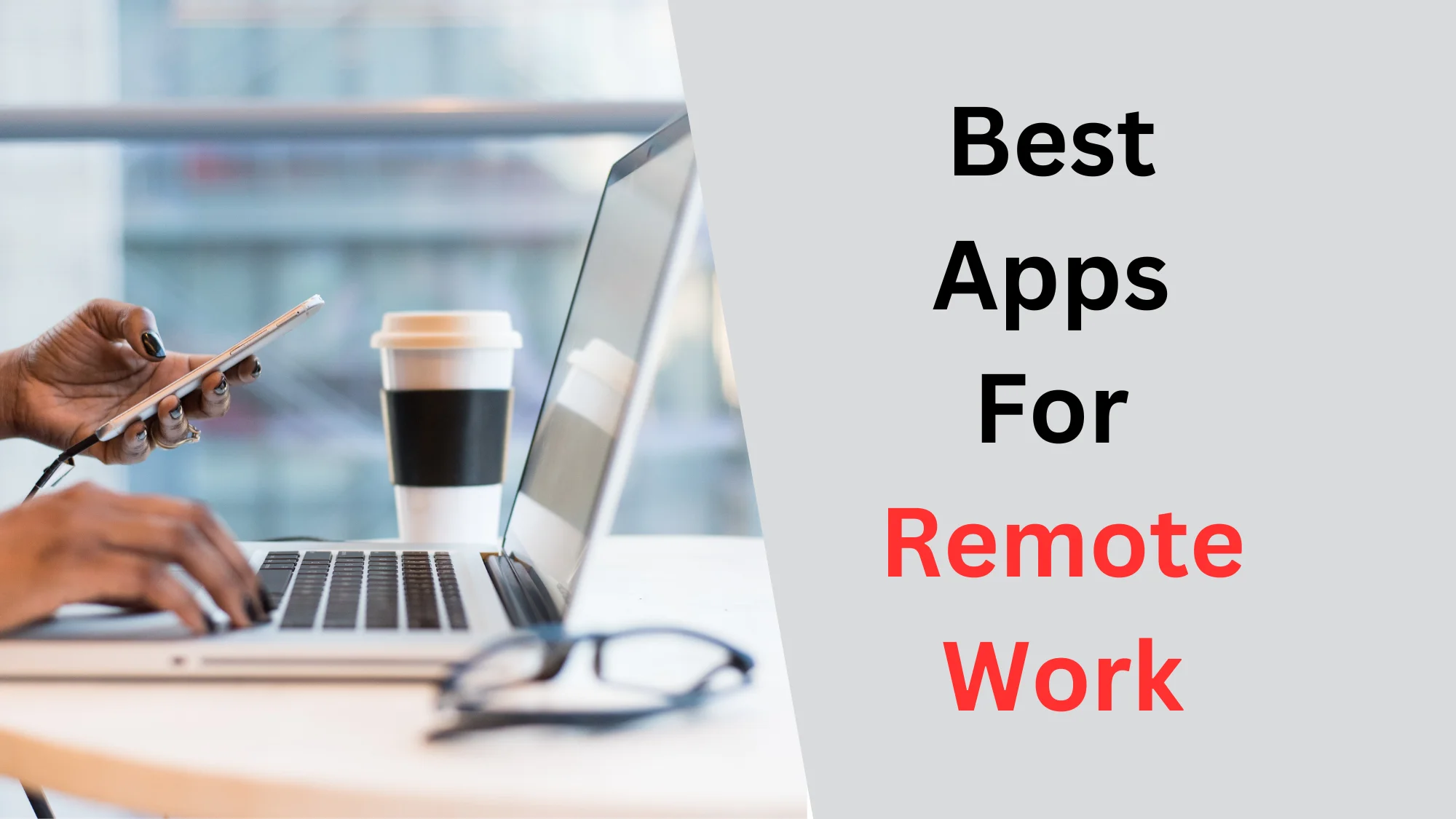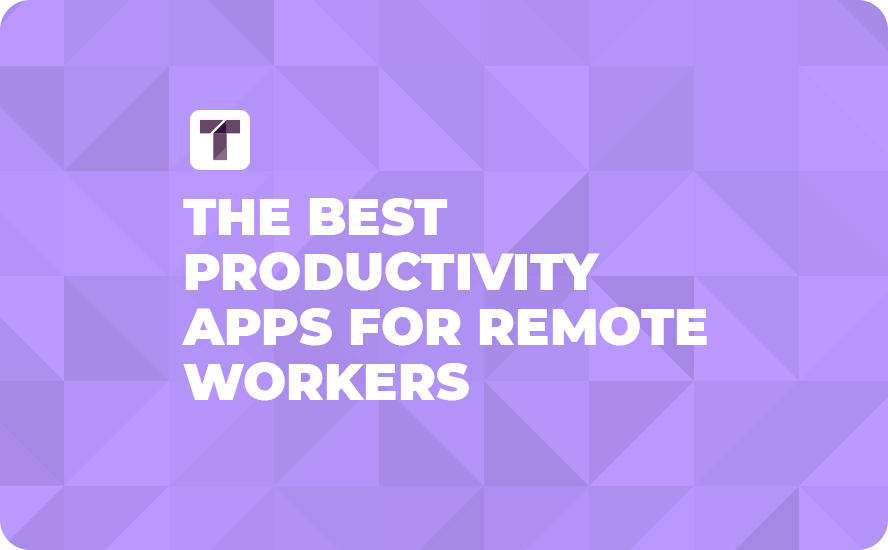Best productivity apps for remote work – In the era of remote work, productivity apps have emerged as indispensable tools for enhancing efficiency and collaboration. These apps offer a range of features tailored to the unique challenges of working from anywhere, empowering remote workers to stay organized, manage their time effectively, and collaborate seamlessly with colleagues.
From task management and time tracking to communication and file sharing, productivity apps provide a comprehensive suite of solutions to streamline remote work processes and boost productivity. In this guide, we explore the essential features of productivity apps for remote work, showcase the top apps in the market, and provide best practices for their effective use.
Productivity Apps for Remote Work
Productivity apps are software tools designed to enhance productivity and efficiency in various aspects of work, such as task management, communication, collaboration, and time tracking. In the context of remote work, productivity apps play a crucial role in enabling individuals and teams to work effectively from anywhere, anytime.
The benefits of using productivity apps for remote work include:
- Improved task management and organization
- Enhanced communication and collaboration
- Increased time efficiency and reduced distractions
- Access to real-time updates and progress tracking
However, there are also challenges associated with using productivity apps remotely:
- Potential for information overload and app fatigue
- Issues with app compatibility and integration
- Security concerns and data privacy
Essential Features of Productivity Apps for Remote Work

Remote workers require productivity apps that streamline tasks, facilitate collaboration, and enhance efficiency. These apps should offer essential features that address the unique challenges of remote work, including:
Effective communication and collaboration tools are crucial for remote teams to stay connected and productive. Features like instant messaging, video conferencing, and file sharing enable seamless communication and foster a sense of camaraderie among team members.
Task Management and Organization
Efficient task management is vital for remote workers to prioritize tasks, track progress, and meet deadlines. Productivity apps should provide features like task lists, customizable workflows, and project management tools to help users organize and manage their workload effectively.
Time Tracking and Reporting
Accurate time tracking is essential for remote workers to monitor their productivity and ensure accountability. Productivity apps with time tracking features allow users to log their hours, track project time, and generate reports for analysis and billing purposes.
File Sharing and Collaboration
Remote teams often work on shared documents and projects. Productivity apps with robust file sharing and collaboration features enable users to store, share, and collaborate on files in real-time. These features ensure that everyone has access to the latest version of documents and can contribute to projects effectively.
Integration with Other Tools, Best productivity apps for remote work
Integration with other tools and platforms is crucial for seamless workflow and increased productivity. Productivity apps should integrate with commonly used tools like email, calendars, and project management software to streamline tasks and eliminate the need for manual data entry.
Top Productivity Apps for Remote Work

In the modern workplace, remote work has become increasingly prevalent. To maintain productivity and efficiency, remote workers require specialized tools and applications that facilitate collaboration, communication, and task management. This comprehensive guide explores the top productivity apps for remote work, highlighting their key features, pricing models, and advantages and disadvantages.
Table of Top Productivity Apps for Remote Work
The following table provides an overview of the top productivity apps for remote work, comparing their key features, pricing, pros, and cons:
| App Name | Key Features | Pricing | Pros | Cons |
|---|---|---|---|---|
| Asana | Task management, project planning, collaboration, file sharing | Free plan available; paid plans start at $10.99 per user per month | User-friendly interface, customizable workflows, mobile app | Limited storage space on free plan, can be complex for large teams |
| Trello | Kanban-style task management, collaboration, file sharing | Free plan available; paid plans start at $10 per user per month | Visual and intuitive interface, easy to use for small teams | Limited customization options, can become cluttered with large projects |
| ClickUp | All-in-one productivity suite, including task management, project planning, collaboration, communication | Free plan available; paid plans start at $5 per user per month | Comprehensive feature set, customizable dashboards, integrations with other tools | Can be overwhelming for new users, complex pricing structure |
| Google Workspace | Suite of productivity apps, including Gmail, Calendar, Drive, Docs, Sheets, and Slides | Free plan available; paid plans start at $6 per user per month | Seamless integration with other Google products, extensive storage space, collaborative features | Can be expensive for large teams, limited customization options |
Best Practices for Using Productivity Apps for Remote Work

Remote work presents unique challenges in terms of staying organized, managing time, and collaborating with colleagues. Productivity apps can be invaluable tools for overcoming these challenges, but using them effectively requires a strategic approach.
Here are some best practices to help you make the most of productivity apps for remote work:
Set Clear Goals and Priorities
Before diving into the apps, take some time to define your goals and priorities for the day or week. This will help you identify the most important tasks and allocate your time accordingly.
Use a Task Management App
A task management app can help you keep track of your tasks, deadlines, and progress. Look for an app that allows you to create lists, set priorities, and collaborate with others.
Use a Time Management App
A time management app can help you track how you spend your time and identify areas where you can improve your efficiency. Look for an app that allows you to set timers, track your progress, and create reports.
Use a Collaboration App
A collaboration app can help you communicate and collaborate with colleagues, even when you’re not in the same physical location. Look for an app that allows you to share files, send messages, and hold video conferences.
Take Breaks
It’s important to take breaks throughout the day, even if you’re working remotely. Get up and move around, or take a few minutes to clear your head. This will help you stay focused and productive.
Case Studies of Productivity Apps in Remote Work: Best Productivity Apps For Remote Work
Productivity apps have revolutionized remote work, enabling teams to collaborate seamlessly and achieve optimal efficiency. Here are real-world examples showcasing the transformative impact of productivity apps in remote work environments.
Remote workers have attested to the significant improvements in their productivity and work-life balance thanks to productivity apps. These apps streamline communication, task management, and project tracking, fostering a cohesive and productive remote work ecosystem.
Case Study: Asana for Task Management
Asana, a popular task management app, has proven instrumental in enhancing productivity for remote teams. One notable case study involves a software development company that implemented Asana to manage its distributed workforce. The app provided a centralized platform for task assignment, tracking, and collaboration, resulting in a 20% increase in project completion rates and a 15% reduction in turnaround time.
Future Trends in Productivity Apps for Remote Work

The future of productivity apps for remote work is poised to be marked by several key trends and advancements. These trends will shape how teams collaborate, communicate, and manage their work, ultimately enhancing productivity and fostering a seamless remote work experience.
One significant trend is the integration of artificial intelligence (AI) into productivity apps. AI-powered features can automate repetitive tasks, provide personalized recommendations, and offer real-time insights into team performance. This automation and data-driven decision-making can free up employees’ time, allowing them to focus on higher-value tasks and strategic initiatives.
Cross-Platform Compatibility and Device Agnosticism
As remote work becomes more prevalent, employees expect to be able to access their productivity tools from any device, regardless of operating system or location. Cross-platform compatibility ensures that apps can be used seamlessly on laptops, desktops, tablets, and smartphones, enabling employees to stay productive wherever they are.
Enhanced Collaboration and Communication Features
Remote work requires robust collaboration and communication tools to bridge the physical distance between team members. Productivity apps are evolving to offer advanced features such as real-time document editing, video conferencing, and instant messaging, facilitating seamless collaboration and fostering a sense of team cohesion.
Increased Data Security and Privacy
As remote work becomes more widespread, data security and privacy concerns become paramount. Productivity apps are prioritizing the implementation of robust security measures to protect sensitive information, including encryption, multi-factor authentication, and access controls. This ensures that data remains secure and compliant with industry regulations.
Personalized User Experience
To cater to the diverse needs of remote workers, productivity apps are embracing personalization. Users can customize their app settings, create personalized dashboards, and receive tailored recommendations based on their preferences and work patterns. This personalization enhances the user experience and optimizes productivity.
Integration with Other Business Tools
Productivity apps are increasingly integrating with other business tools, such as CRM systems, project management software, and file storage services. This integration streamlines workflows, reduces data silos, and enables a more cohesive and efficient work environment for remote teams.
Conclusion
As remote work continues to evolve, productivity apps will play an increasingly vital role in shaping the future of work. By leveraging the latest advancements in technology, these apps will continue to empower remote workers to achieve optimal productivity and collaboration, regardless of their location.
Quick FAQs
What are the key benefits of using productivity apps for remote work?
Productivity apps offer numerous benefits for remote workers, including improved task organization, enhanced time management, seamless collaboration, and reduced distractions.
What are the essential features to look for in a productivity app for remote work?
Key features to consider include task management, time tracking, project planning, communication tools, file sharing, and integration with other apps.
How can I choose the best productivity app for my remote work needs?
Consider your specific requirements, such as the number of users, types of tasks, and desired features. Research different apps, read reviews, and try out free trials to find the best fit.
